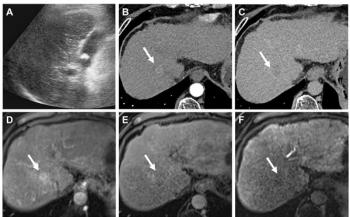
Initial research challenges contrast reaction dogma
Contrary to conventional wisdom, patients with life-threatening adverse reactions to contrast media may be truly allergic to certain agents, the same way people are allergic to dust or pollen. The evidence so far is preliminary, but if it is borne out by further research, the finding would have significant implications for the administration of contrast agents.
Contrary to conventional wisdom, patients with life-threatening adverse reactions to contrast media may be truly allergic to certain agents, the same way people are allergic to dust or pollen. The evidence so far is preliminary, but if it is borne out by further research, the finding would have significant implications for the administration of contrast agents.
The CIRTACI study, a prospective multicenter study in France, is testing a hypothesis that some contrast reactions are truly allergic. Under the traditional definition of "truly allergic," the body has been exposed to a particular antigen, such as pollen or an antibiotic, and develops antibodies to the substance that are activated at the next exposure, resulting in the release of histamine.
Common wisdom holds that contrast media reactions are nonspecific in that they occur with classes of agents, rather than particular molecules. Following that logic, doctors have attempted to limit adverse reactions by avoiding the administration of contrast in patients with a history of severe reactions, or premedicating-and giving contrast often the same agent that caused the reaction.
In recent years, however, researchers have suggested that some reactions to contrast media are truly allergic. If the CIRTACI study proves correct, the common wisdom would be turned on its head. Rather than forego contrast administration altogether or deliver the same contrast agent following medication, radiologists could note the offending agents and try alternatives.
Dr. Olivier Clement, a professor of radiology at Assistance Hopitaux Publique in Paris, and colleagues have so far noted reactions to both iodinated and gadolinium contrast media in 175 patients in 31 sites across France. In 115 of these cases, they were able to perform blood and skin tests to measure histamine levels after contrast administration. Results so far support the true allergy hypothesis. CIRTACI aims to enroll at least 300 patients to make its case.
"It is very important to determine if patients have had a nonspecific or truly allergic reaction. If you inject truly allergic patients with the same compound, they will have another reaction, and it could be even more severe," Clement said.
Dr. Elliott Lasser, a pioneer in contrast media reaction research in the U.S., agrees that using an alternative agent is sensible, but he has a different view regarding the cause of reactions. In comparison with other substances that cause adverse reactions, x-ray agents can bind to antibody molecules in an unusual way, depending on a number of factors that include the volume of contrast injected and the patient's allergies, Lasser said. He also found differences in the binding properties of particular contrast agents (Int Arch Allergy Immunol 2000;123:282-290).
Contrast media are able to bind to a large range of antibodies generated in response to other antigens, such as dust or pollen. If the patient is highly allergic, the agents can bind in a way that triggers release of histamine, giving the appearance of a true allergic reaction, Lasser said. But since the agents bind to a range of antibodies, the reaction is not specific.
Lasser has shown that larger amounts of contrast may actually inhibit immune reactions, so a small amount of contrast could be more likely to cause a reaction in some patients than a larger dose. Oddly enough, topical application of contrast may help prevent specific antigen-induced allergic reactions, he said.
Newsletter
Stay at the forefront of radiology with the Diagnostic Imaging newsletter, delivering the latest news, clinical insights, and imaging advancements for today’s radiologists.




























